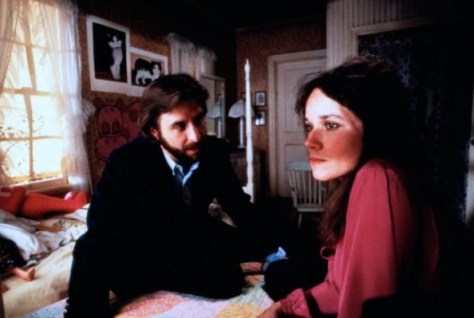
Format: DVD
Director: Alberto De Martino
Writers: Paolo Levi, Frank Walker, Stanley Wright, Stefano Canzio
Cast: Neil Connery, Daniela Bianchi, Adolfo Celi
Italy 1967
104 mins
This review of is an excerpt from horror luminary Kim Newman’s new book Video Dungeon (Titan), which explores the B-movie basement and digs out unexpected gems.
Only in 1967… only in Italy… could an entire movie, with a reasonably healthy budget, be built around the fact that Sean Connery’s younger brother was sort of interested in acting. Of the (many) imitations of the James Bond series, this – even more than the Charles Vine movies, which sold themselves as the adventures of the second best secret agent in the world – is most outrageous in lifting from the parent megafranchise. It’s also loopy Italian exploitation which shares personnel with the classic Diabolik – though director Alberto De Martino (The Antichrist, Holocaust 2000) is a plodder next to Mario Bava.
Neil Connery, who refused to shave a neatly trimmed beard which makes him look more like a villain than a hero, plays Neil, the brother of the coyly unnamed best secret agent in Europe. He’s not a professional spy but a plastic surgeon who uses Tibetan hypnosis as anaesthetic (and for memory recovering purposes), is also a champion archer and all-round playboy. Connery, whose infernally catchy Ennio Morricone-Bruno Nicolai theme song warbles ‘OK Connery’ wherever he goes, is approached by Commander Cunningham (Bernard Lee) and Miss Maxwell (Lois Maxwell) of the British Secret Service to fight Thair (Adolfo Celi), Number Two (codename Beta) of the SPECTRE-like evil organisation THANATOS. Thair plans to use a device (based on misuse of an ‘atomic nucleus’ and radioactive rugs manufactured by ailing blind people in North Africa) to disable every mechanical or electronic component in the world. Mildred (Agata Flori) is Thair’s all-the-way-evil girlfriend and gets killed, while Maya (Daniela Bianchi) goes the Pussy Galore route and switches sides (along with her troupe of girl sailors) after receiving serious smooching from Dr Neil and discovering her boss intends to kill her off as a loose end. With guns, planes and cars not working, Connery and archery club pals in Robin Hood/William Tell hats invade Thair’s underground lair with old-fashioned bows and arrows.
Yes, the casting is that blatant, with Lee and Maxwell in basically their regular 007 roles, and Bianchi (From Russia With Love) and Celi (Thunderball) doing Bond girl and Bond villain shtick honed to perfection in the official series. Even Anthony Dawson, the to-be-murdered Alpha of THANATOS, was in Dr No and (without credit) played Blofeld in movies where the villain stroked his cat in the shadows. Celi finds an escape dinghy built into his yacht in imitation of the boat gadget from Thunderball and a baddies-sat-around-the-plotting-table set piece echoes Goldfinger and Thunderball. Pop-eyed Connery (dubbed by a bland American) hasn’t got the charisma to carry off the role of himself, let alone prove a credible threat to his big brother (he’s rather more relaxed in The Body Stealers). However, O.K. Connery is a hoot for its non-stop parade of astounding outfits (Celi has a red leather jumpsuit with shoulder pads), weird plot turns (Connery poses as a blind Arab to infiltrate the evil rug factory and foment a rebellion, good guys dressed as van Gogh have a gunfight in an orchard with bad guys in red berets and matching pullovers), gadgets (a flick-knife that shoots a blade across the room, machine guns hidden in the ceiling), eye-popping candy colours and a general attitude of what-the-hell… In the Bond films, Maxwell’s Miss Moneypenny spent all her time quipping and pining in M’s outer office; De Martino at least gets the actress in the field to mow down THANATOS goons with a machine gun disguised as a sheaf of hay.
Outstanding contribution: costume designer Gaia Romanini. Also with Franco Giacobini as a comedy relief agent called away from his wedding, Ana María Noé as an imitation of Lotte Lenya’s Rosa Klebb, and a lot of pretty girls. Story and script mostly by Paolo Levi (7 Women for the MacGregors, The Killer Reserved 9 Seats), with Frank Walker, Stanley Wright and Stefano Canzio.
Kim Newman











